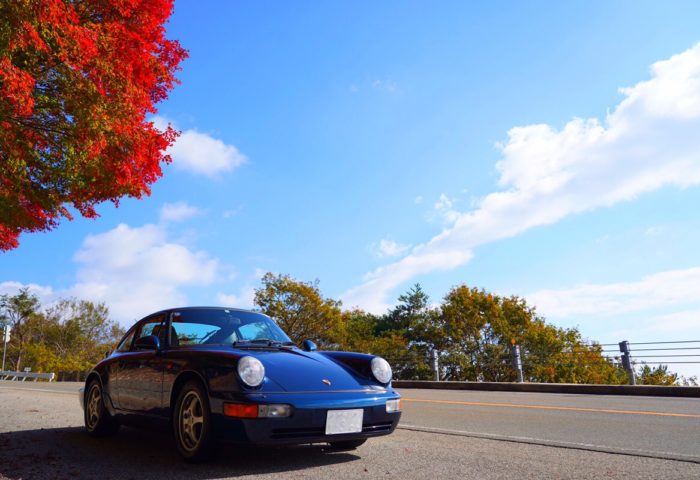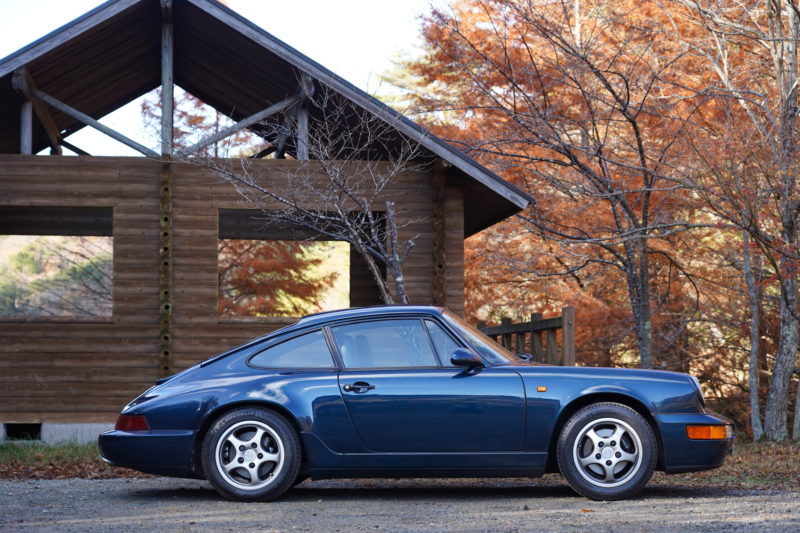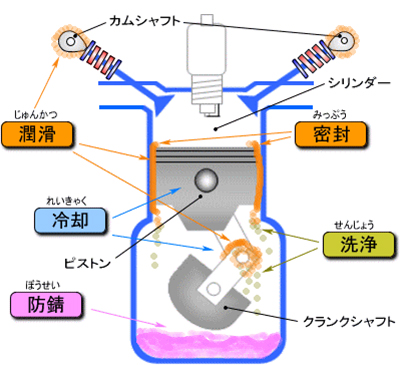Investigating the “Dry Sump System” Used in Porsche
公開日:2019.01.04

The Gurgling Sound of Air-Cooled Porsches
Recently, I received this comment on my husband’s review of the air-cooled Porsche 991 (964C2) (Asked my husband, who drives the 911 (964C2) almost daily, what he loves about it [Part 2]).
Personally, I love air-cooled engines that let you hear the sound of the engine cylinders rubbing and the gurgling of oil circulating, much more than modern sports cars where exhaust noise is the main feature♡
Gurgling sound, huh… lol
I immediately told my husband, “Someone left a comment like this!” and he said,
I totally get the gurgling sound!! I love that sound too. Every time I start the engine and get going, I find myself waiting, hoping the oil warms up quickly so I can hear that gurgling sound (laughs). Hearing it makes me imagine the car’s simple mechanical structure, and somehow it feels like blood is circulating—like the car is a living creature with a heartbeat.
He was really excited talking about it.
I kind of get it, but also don’t… (-_-) lol
But it’s true that the analog feel of air-cooled engines seems to double the sense of partnership and affection for the car.

How Engine Oil is Supplied
While talking about engine oil, my husband said, “By the way, Porsche uses a dry sump system.”
Dry sump…? (*_*)
Since I had never heard of a dry sump before, I decided to do a little research as usual. First of all, the role of engine oil in a car can be broadly divided into five functions.
① Lubrication… Reduces wear and seizure caused by high-speed movement of metal parts like the “pistons,” “crankshaft,” and “camshaft” inside the cylinder.
② Sealing… If the seal between the “cylinder” and “piston” is insufficient, energy generated by combustion escapes through gaps. To maintain sealing effectiveness, the engine oil is regularly replaced with fresh, viscous oil, or the engine is overhauled.
③ Cooling… Engine parts get very hot due to combustion and friction, so oil plays a role in cooling these high temperatures. The oil absorbs heat as it circulates through the engine and returns to the “oil pan” to cool. Sports and racing cars, designed for high-speed driving, generate even higher engine temperatures, so they are equipped with air-cooled or water-cooled “oil coolers.”
④ Cleaning… Combustion and rotation produce various contaminants. If these accumulate, engine performance and lifespan suffer. Therefore, engine oil absorbs and disperses dirt.
⑤ Rust Prevention… The engine’s high temperatures cause moisture to form due to temperature differences, which leads to rust. Engine oil also has the role of preventing rust formation.
*Source: OFT co.,ltd “Basic Knowledge About Engine Oil”
Makes sense.
On top of that, the common oil supply method in most cars is called the “wet sump.” The wet sump system works by letting oil inside the engine naturally drain down to the oil pan attached at the bottom of the engine. The oil pump then draws oil from the pan and sends it to various parts of the engine.

*Image source: OFT co.,ltd “Basic Knowledge About Engine Oil”
Dry Sump System
On the other hand, air-cooled Porsches do not use the “wet sump” system but instead adopt the “dry sump system.” The dry sump system is:
“Oil is supplied from an oil tank located away from the engine to lubricate various parts inside the engine. The engine oil absorbs heat generated during combustion and falls to the bottom of the engine, where it collects. An oil pump then draws the oil and circulates it back to the oil tank.”

*Image source: Wikipedia “Dry Sump”
However, because the dry sump system is more complex, it increases manufacturing labor and costs, so it is not used in ordinary cars.
So why does Porsche choose to adopt the dry sump system anyway?
Porsche sports cars are designed with racing circuits in mind. When cornering on a circuit, the G-forces are much stronger than when turning on city streets, so in a “wet sump” system where oil is drawn from the oil pan, the oil can shift to one side, causing insufficient oil pressure and temporary lubrication failure, which risks engine seizure.
The dry sump system eliminates this risk and, because it doesn’t require an oil pan under the engine, allows the engine to be mounted lower, lowering the car’s center of gravity and improving stability.
Therefore, the dry sump system is mainly used in racing and sports cars. However, since the water-cooled era, Porsche has adopted its own engine oil supply system called the “Integrated Dry Sump System.”
Porsche Trivia
The more I learn, the more I realize how much thought goes into making a car, and Porsche truly impresses me again and again. This year, I hope to deepen my understanding of Porsche even further so I can appreciate Porsche’s charm even more. To all readers, thank you for your continued support this year as well m(_ _)m
■ By the way, here are some “Porsche trivia” I’ve researched so far:
→Is the squealing of Porsche brakes a defect? No, it’s actually proof of Porsche brakes.
→The golden rule for Porsche drivers—How to properly start a Porsche manual transmission car
→Is the grinding noise from Porsche tires when turning the steering wheel at low speed a defect?
このブログが気に入ったらフォローしてね!


Comment ( 0 )
Trackbacks are closed.
No comments yet.